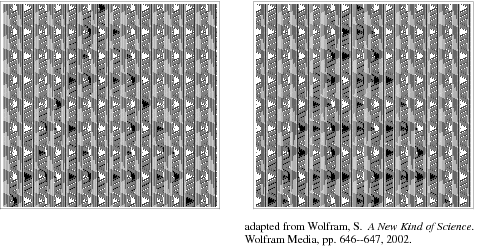

تاريخ الرياضيات

الاعداد و نظريتها

تاريخ التحليل

تار يخ الجبر

الهندسة و التبلوجي


الرياضيات في الحضارات المختلفة

العربية

اليونانية

البابلية

الصينية

المايا

المصرية

الهندية


الرياضيات المتقطعة

المنطق

اسس الرياضيات

فلسفة الرياضيات

مواضيع عامة في المنطق


الجبر

الجبر الخطي

الجبر المجرد

الجبر البولياني

مواضيع عامة في الجبر

الضبابية

نظرية المجموعات

نظرية الزمر

نظرية الحلقات والحقول

نظرية الاعداد

نظرية الفئات

حساب المتجهات

المتتاليات-المتسلسلات

المصفوفات و نظريتها

المثلثات


الهندسة

الهندسة المستوية

الهندسة غير المستوية

مواضيع عامة في الهندسة

التفاضل و التكامل


المعادلات التفاضلية و التكاملية

معادلات تفاضلية

معادلات تكاملية

مواضيع عامة في المعادلات


التحليل

التحليل العددي

التحليل العقدي

التحليل الدالي

مواضيع عامة في التحليل

التحليل الحقيقي

التبلوجيا

نظرية الالعاب

الاحتمالات و الاحصاء

نظرية التحكم

بحوث العمليات

نظرية الكم

الشفرات

الرياضيات التطبيقية

نظريات ومبرهنات


علماء الرياضيات

500AD

500-1499

1000to1499

1500to1599

1600to1649

1650to1699

1700to1749

1750to1779

1780to1799

1800to1819

1820to1829

1830to1839

1840to1849

1850to1859

1860to1864

1865to1869

1870to1874

1875to1879

1880to1884

1885to1889

1890to1894

1895to1899

1900to1904

1905to1909

1910to1914

1915to1919

1920to1924

1925to1929

1930to1939

1940to the present

علماء الرياضيات

الرياضيات في العلوم الاخرى

بحوث و اطاريح جامعية

هل تعلم

طرائق التدريس

الرياضيات العامة

نظرية البيان
Universal Cellular Automaton
المؤلف:
Adamatzky, A.
المصدر:
Collision Based Computing. Mult.-Valued Log. 6
الجزء والصفحة:
...
29-8-2021
2888
Universal Cellular Automaton
A universal cellular automaton is a cellular automaton which, like a Turing machine, exhibits universality. von Neumann proved that an automaton consisting of cells with four orthogonal neighbors and 29 possible states would be capable of simulating a Turing machine for some configuration of about  cells (Gardner 1983, p. 227).
cells (Gardner 1983, p. 227).
The outlines of a proof that the two-dimensional game of life outer-totalistic cellular automaton is universal were given by Berlekamp, Conway, and Guy (1982) and independently by Gosper (Gardner 1983, pp. 250-253). Around 2000, a Turing machine was explicitly implemented in life by P. Rendell (Rendell, Adamatzky 2001). While Rendell's machine can be made into a "true" universal computer simply by making his tape infinite, he neither noted this fact nor provided an actual construction of a universal Turing machine. Subsequently, on November 11, 2002, P. Chapman constructed a game of life pattern that implements the actions of a universal register machine, thus explicitly proving the game of life to be universal.


More amazingly still, even one-dimensional cellular automata can be universal. Wolfram (2002, pp. 644-656) gave an example of a 19-color universal one-dimensional next-nearest neighbor cellular automaton in which a block of 20 cells is used to represent each single cell in the cellular automaton being emulated. The examples above show the first few steps of the 19-color universal automaton emulating rule 90 and rule 30, respectively (Wolfram 2002, pp. 646-647).
Smith (1971) showed that 18 colors and nearest-neighbor 1-dimensional rules could be universal, and Lindgren and Nordahl (1990) constructed a 7-color nearest-neighbor universal cellular automaton. And most amazingly of all, as shown by Wolfram (2002, pp. 675-691), two colors and nearest neighbor rules are sufficient for producing universality in a 1-dimensional cellular automaton. In particular, although it is anything but straightforward to prove, the rule 110 elementary cellular automaton is universal (Cook 2004).
Gacs (2001) has proven that there exist fault-tolerant universal cellular automata, whose ability to simulate other cellular automata is not hindered by random perturbations provided that such perturbations are sufficiently sparse.
REFERENCES:
Adamatzky, A. (Ed.). Collision Based Computing. Mult.-Valued Log. 6, pp. 397-514, 2001. Yverdon: Gordon and Breach, 2001.
Berlekamp, E. R.; Conway, J. H.; and Guy, R. K. "What Is Life?" Ch. 25 in Winning Ways for Your Mathematical Plays, Vol. 2: Games in Particular. London: Academic Press, 1982.
Chapman, P. "Life Universal Computer." http://www.igblan.com/ca/.
Cook, M. "Universality in Elementary Cellular Automata." Complex Systems 15, 1-40, 2004.
Gacs, P. "Reliable Cellular Automata with Self-Organization." J. Stat. Phys. 103, 45-267, 2001.
Gardner, M. "The Game of Life, Parts I-III." Chs. 20-22 in Wheels, Life, and other Mathematical Amusements. New York: W. H. Freeman, 1983.
Gray, L. "A Mathematician Looks at Wolfram's New Kind of Science." Not. Amer. Math. Soc. 50, 200-211, 2003.
Lindgren, K. and Nordahl, M. G. "Universal Computation in Simple One-Dimensional Cellular Automata." Complex Systems 4, 299-318, 1990.
Rendell, P. "This Is a Turing Machine Implemented in Conway's Game of Life." http://www.rendell.uk.co/gol/tm.htm.
Smith, A. R. III. "Simple Computation-Universal Cellular Spaces." J. Assoc. Comput. Mach. 18, 339-353, 1971.
Wolfram, S. A New Kind of Science. Champaign, IL: Wolfram Media, pp. 646-647, 2002.
 الاكثر قراءة في الرياضيات التطبيقية
الاكثر قراءة في الرياضيات التطبيقية
 اخر الاخبار
اخر الاخبار
اخبار العتبة العباسية المقدسة

الآخبار الصحية















 قسم الشؤون الفكرية يصدر كتاباً يوثق تاريخ السدانة في العتبة العباسية المقدسة
قسم الشؤون الفكرية يصدر كتاباً يوثق تاريخ السدانة في العتبة العباسية المقدسة "المهمة".. إصدار قصصي يوثّق القصص الفائزة في مسابقة فتوى الدفاع المقدسة للقصة القصيرة
"المهمة".. إصدار قصصي يوثّق القصص الفائزة في مسابقة فتوى الدفاع المقدسة للقصة القصيرة (نوافذ).. إصدار أدبي يوثق القصص الفائزة في مسابقة الإمام العسكري (عليه السلام)
(نوافذ).. إصدار أدبي يوثق القصص الفائزة في مسابقة الإمام العسكري (عليه السلام)


















